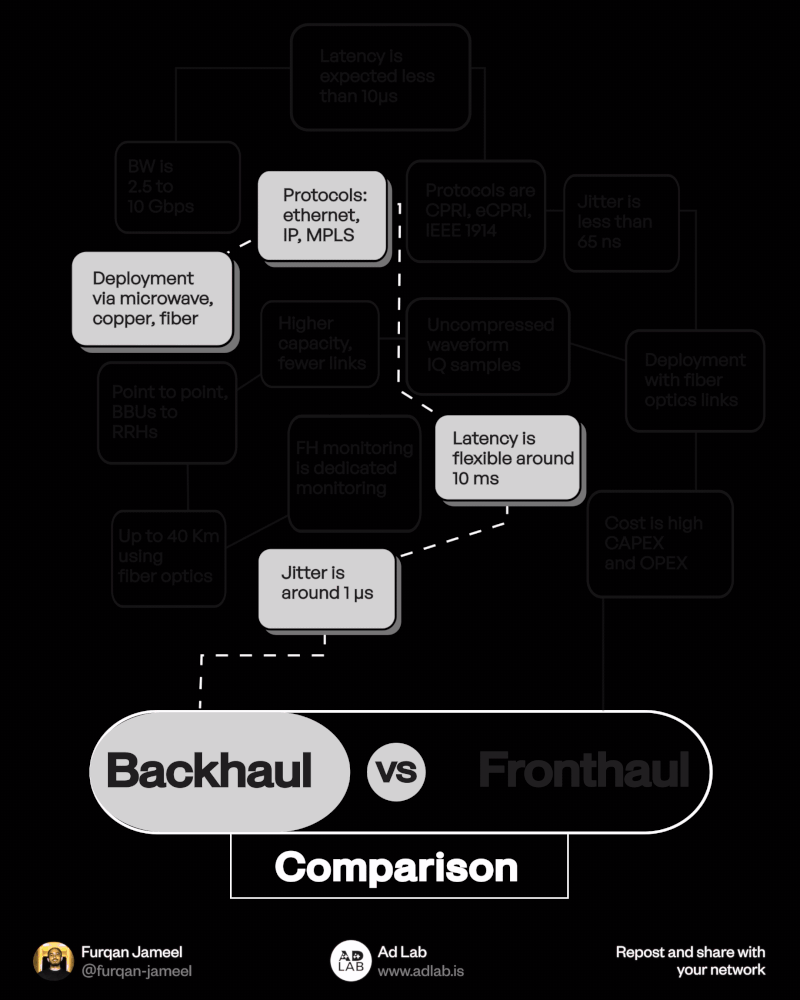Fronthaul and Backhaul both carry your data.
But not the same way.
One needs to be lightning-fast.
The other just needs to reach far.
We often lump fronthaul and backhaul together.
But they serve very different purposes in a 5G network.
Here’s how they really stack up:
 Latency?
Latency?
Fronthaul: ultra-low (<25 µs)
Backhaul: much higher (10 ms)
 Bandwidth?
Bandwidth?
Fronthaul: 2.5–10 Gbps
Backhaul: 1–10 Gbps, but shared
 Protocols?
Protocols?
Fronthaul: CPRI, eCPRI, IEEE 1914
Backhaul: Ethernet, IP, MPLS
 Range?
Range?
Fronthaul: up to 40 km
Backhaul: up to 200 km
 Jitter?
Jitter?
Fronthaul: <65 ns
Backhaul: ~1 µs
 Waveform?
Waveform?
Fronthaul: uncompressed IQ samples
Backhaul: compressed packets
 Topology?
Topology?
Fronthaul: BBU to RRH, tight coupling
Backhaul: cell sites to core, flexible
 Deployment?
Deployment?
Fronthaul: fiber-heavy
Backhaul: microwave, copper, fiber
 Capacity?
Capacity?
Fronthaul: fewer links, more capacity
Backhaul: more links, less capacity
 Monitoring?
Monitoring?
Fronthaul: dedicated oversight
Backhaul: shared systems
 Cost?
Cost?
Fronthaul: expensive (high CAPEX/OPEX)
Backhaul: cost-effective
Fronthaul is a sprinter.
Backhaul is a marathon runner.
5G doesn’t just rely on fast speeds.
It relies on smart infrastructure.
Thanks for reading.

LinkedIn: ![]()